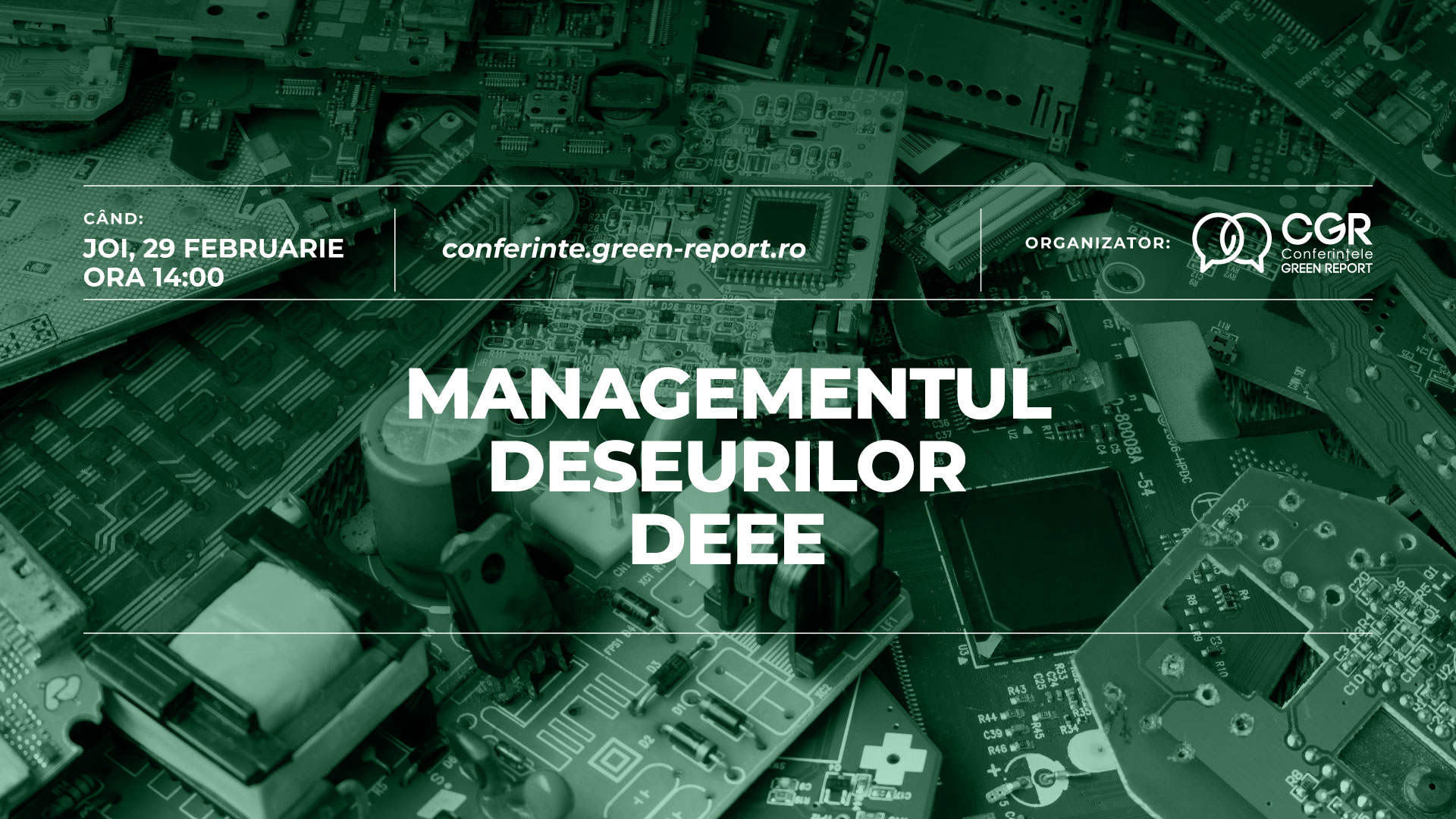Who is responsible for managing electrical equipment, including when it becomes waste?
On Thursday, February 29, the Green Report WEEE Management Conference took place at the Galateca Gallery in Bucharest. How do we create clarity in the system and achieve collection targets?
The current situation of WEEE management in Romania was analyzed from the perspective of authorities, WEEE management organizations, processors, as well as producers.
The debate brought to light the latest changes in Government Ordinance 5 regarding WEEE management. These refer to clarifying the responsibility of producers, complying with collection and recovery targets, as well as establishing collection targets for each category of WEEE. Additionally, there was a discussion about the need to introduce an article about setting up the Clearing House system in Government Ordinance 5.
“The responsibility of producers is clarified – the producer is responsible for the equipment introduced into the Romanian market throughout its entire lifecycle, including when it becomes waste… Moreover, we must ensure that not only collection targets are met but also recycling and recovery targets…” stated Sabina Irimescu, responsible for WEEE at the General Waste Directorate in the Ministry of Environment.
Regarding the targets for each category, Mrs. Irimescu emphasized that the Ministry of Environment’s proposal was 50% for each category, with the exception of photovoltaic panels. This decision is currently in Parliament, in the approval committee.
However, this proposal to set targets for each category separately is one of the most problematic for processors and WEEE management organizations.
“For certain categories of WEEE, it will be almost impossible to reach this target, and one of the reasons we got here is the decrease in penalties. We will end up with hazardous WEEE in landfills because it is easier to pay penalties than to meet the target. The cost of managing WEEE has become three times higher than the penalty.”
said Simona Vaida, Government Affairs Manager at Recolamp.
In addition, Alexandra Ghenea, Executive Director of the PRO WEEE Coalition, stated that another problem is that “we do not have an overview of the market situation – it would be useful to have data from AFM (Romanian Environmental Fund Administration) on each category, respectively, how much has been collected.”
“There are many types of waste that people do not associate with the category of electrical equipment, such as electronic cigarettes, electric toothbrushes, USBs, or battery-operated toys. More intensive awareness efforts need to be made in this area to convince people that these types of equipment are not plastic but are still electrical equipment and need to be collected separately,”said Roxana Puia, Environ.
On the other hand, the good news from AFM is that next week, a financing program for recycling plants will be launched, with a budget between EUR 500,000 and EUR 8.4 million, with a total funding line value of EUR 220 million, according to Adrian Corbu, vice president of AFM, who was present at the conference yesterday.
Furthermore, AFM representatives confirmed at yesterday’s conference that they will provide, upon request, data on registrations for collections for each category of WEEE.
